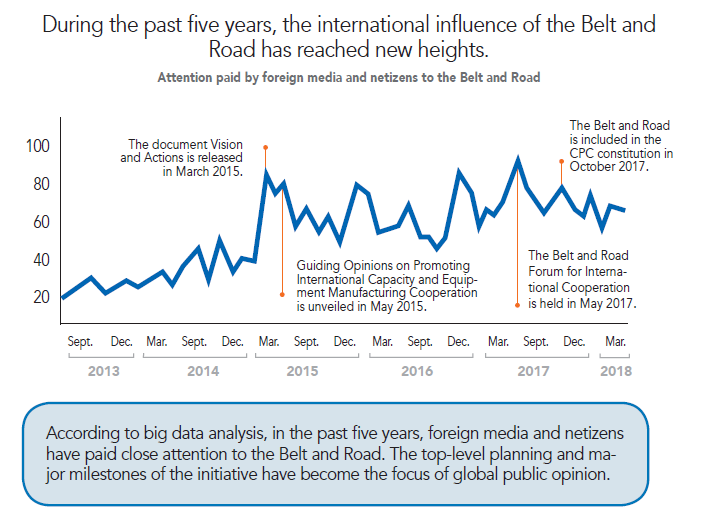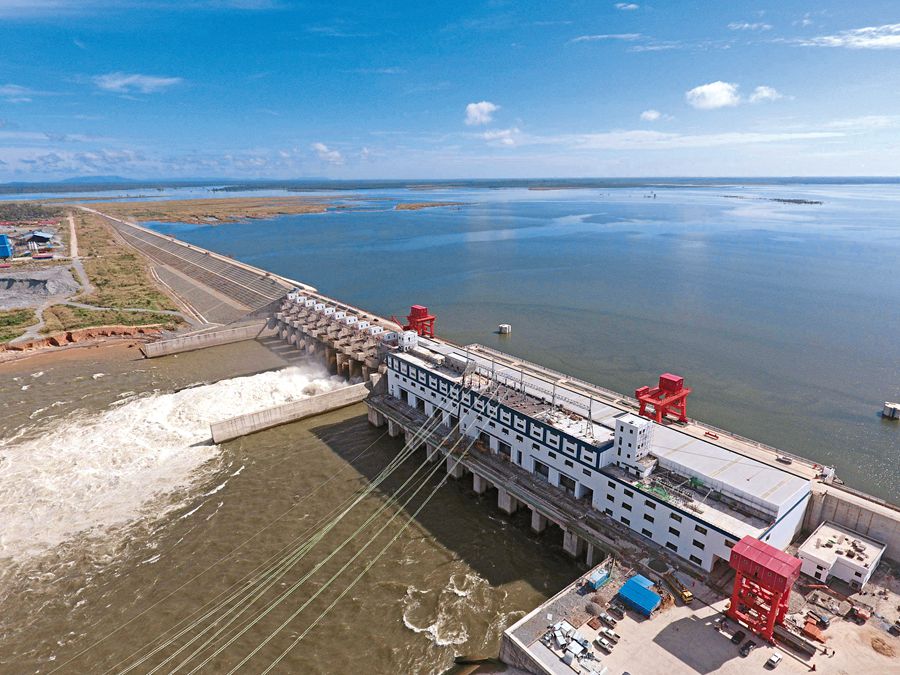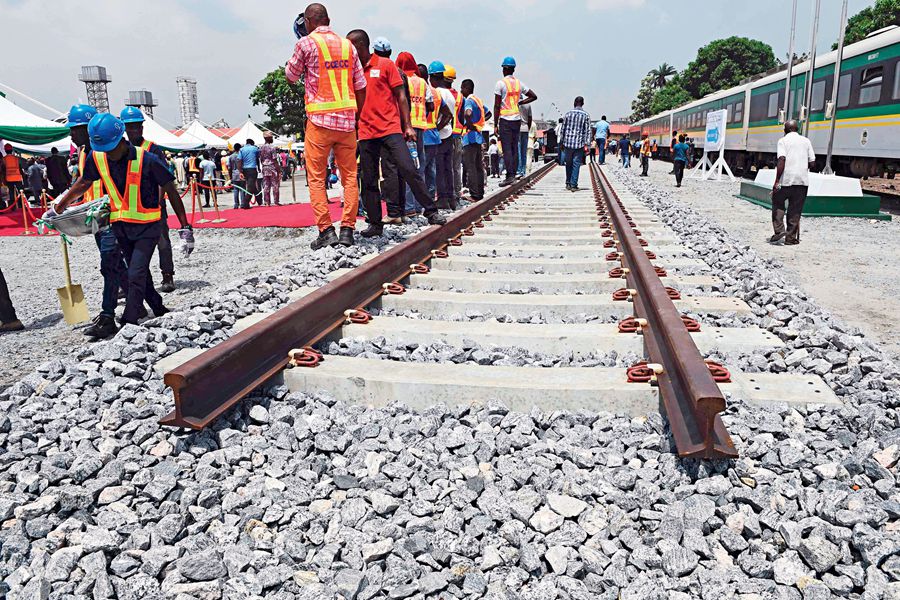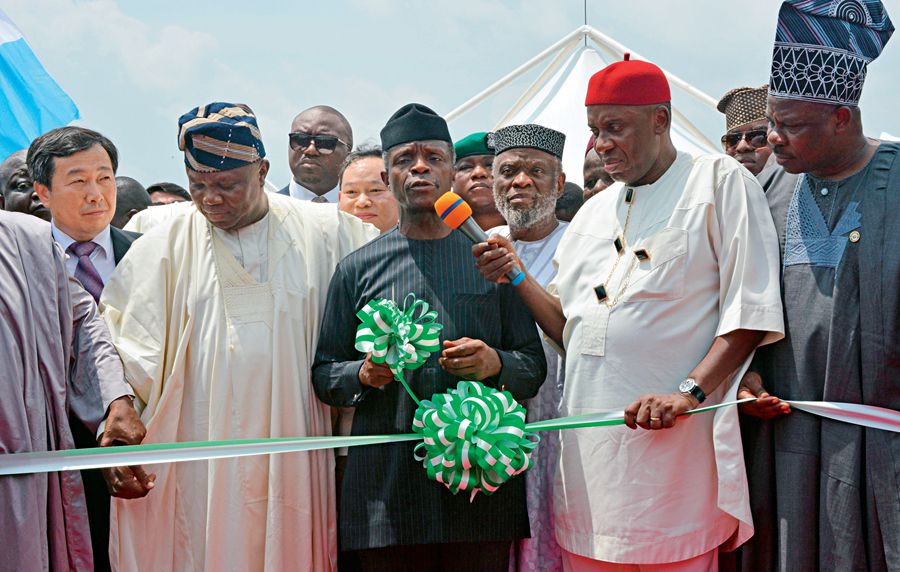AN important lesson summed up by the ancient Chinese in practice is that if hard work is put in from the foundation, naturally there will be significant results. The Belt and Road Initiative (BRI) proposed by China is playing a large part in the prosperity and revitalization of developing countries in Asia and Africa. Following the solid advancement of China’s deep-seated cooperation with countries along the Belt and Road, the flagship projects of the BRI have produced fruitful results in many Asian and African countries.
Lagos-Ibadan Railway: Accelerating Nigeria’s Development
Nigeria, located in the southeast of West Africa, has the largest population in the continent with nearly 200 million people. As its economic center, Lagos is the largest single city in Africa, with a population of more than 20 million. However, compared with the huge population, Nigeria’s infrastructure, especially its railway system, lags behind, which has seriously restricted economic development, resulting in heavy traffic congestion. For example, the port areas in Lagos, represented by the Apapa Port, have long been plagued by the congestion problem, and container trucks waiting in long queues have been a common sight.

Chinese often say that if you want to get rich, build roads first. In order to break through the bottleneck of development, Nigeria decided to build a standard gauge railway, the Lagos-Kano Railway. Previously, Nigeria’s railways were narrow gauge, namely 40 feet (12.192 meters) per section and one meter in railway track spacing. Because of the narrow rail spacing, the speed of the train and the width of the vehicle are limited. The short length of each rail increases the collision frequency between rail joint and train wheel. It is not only very noisy, but also reduces lowers the service life of railroad tracks and trains.
As a landmark China-Nigeria cooperation project under the BRI, Chinese companies were contracted to build the Lagos-Ibadan Railway – the second section of the Lagos-Kano Railway. Running through the three states of Lagos, Ogun, and Oyo, the 156.08-km railway has a total contract value of US $1.581 billion. Its construction started on March 7, 2017, and is expected to be completed in three years. The railway line adopts China’s double-track 1435 mm gauge, and its designed maximum speed is 150 kilometers per hour. By its completion, the West Africa region where Nigeria is located, will have a Chinese-standard railway. The trains will run smoother, steadier, and safer than before.
This railway will facilitate transportation of goods through the port of Lagos, which will play a significant role in the economic development of the area along the railway line, especially Ogun State, the industrial region north of Lagos. According to Ogun State Governor Ibikunle Amosun, the railway serves as a decompression valve to release the pressure of the transportation system in Lagos. It meets the development needs and encourages more people to work and live in Ogun State in the future, enhancing development and making it more international. The railway will drive economic growth and lay the foundation for Nigeria’s development.
Being under construction though, the railway has already brought considerable economic benefit to Nigeria. The project has created more than 4,000 jobs. Meanwhile, it has also led to the development of supporting industries such as building materials and engineering construction, as well as generated new taxes.
On February 8, 2019, during the first test ride, a large number of people came in and all the carriages were filled. Every time the train passed through a market, there were crowds of people cheering the passage of the train. Many people on the move would stop and take photos, and children would chase the train. Nigerian Minister of Transport Rotimi Amaechi expressed gratitude to Chinese friends at the ceremony held at the end of the test drive in Abeokuta, the capital of Ogun State.

Lower Sesan II Hydroelectric Power Station built by Chinese enterprises is the largest hydropower project in Cambodia.
To date, 37 African countries including Nigeria and the African Union have signed cooperation documents with China to jointly build the Belt and Road. Africa has become an important direction for the Belt and Road international cooperation. UN Secretary-General António Guterres, during an interview with People’s Daily last September, said, “I truly believe that Africa’s success is vital to world peace and development, and Africa’s success is inseparable from cooperation with China.”
See the World with Access to Satellite TV
For many ordinary people in Africa, watching TV used to be a luxury. After the Chinese government pledged to provide access to satellite TV for 10,000 African villages and donate set-top boxes to 200,000 African families, an outcome of the 2015 summit of the Forum on China-Africa Cooperation held in Johannesburg, South Africa, the wishes of many people came true. A Chinese company has been responsible for carrying out the project and undertaking subsequent commercial operations and maintenance.
In Nigeria, a total of 1,000 villages have benefitted from the project. The project selected three public areas in each village to install projection TVs and TV sets and local villagers can watch 21 sets of satellite TV programs for free through these devices. The project also donated set-top boxes and a two-month viewing fee to 20 families in each village. After two months, if the user does not pay fees, they can continue to watch a set of satellite TV programs for free, or they can choose to pay the equivalent of RMB18 per month to watch 34 sets of programs. The villagers now can watch digital TV programs with stable signals and rich content.

Workers stand along a prototype rail line during the ground breaking for the construction of Lagos-Ibadan rail line in Lagos on March 7, 2017.
Villagers in Nigeria and many other African countries are constrained by two factors from watching TV: lack of electricity and high programming fees. In order to ensure the supply of power, the project equipped the villages with solar panels, which can ensure that the TV can be continuously played for at least 5 hours a day. The satellite TV fee rate is relatively low, and the free programs provided by the Chinese company have basically met their content demand.
Local audiences also have access to a special kung fu channel through the set-top boxes provided by the Chinese company. Some movies with Chinese kung fu stars are very popular, leading to the unleashing of a martial arts fever in local communities. According to Zhou Pingjian, Chinese ambassador to Nigeria, the launching of the project in Nigeria is a vivid manifestation of the comprehensive promotion of the Belt and Road Initiative. He said that the Chinese government is very happy to participate in this project to strengthen Nigerian people’s external contacts.
“I never thought I could watch TV, let alone clear digital TV! It is like another pair of eyes to let me see the world outside, the world is so big, and there is so much fun!” said Ivining, a 9-year-old Nigerian boy.
Lower Sesan II Hydroelectric Power Station: Illuminating Cambodia’s
Development Road
Cambodia is one of China’s friendly neighbors in Southeast Asia and an important partner along the Belt and Road. For a long time, power shortages had been plaguing the country. Although water resources are very rich, the lack of development capacity led to a shortage of electricity supply there, and its electricity became dependent on imports.
In order to effectively alleviate the problem of power shortages, Chinese companies and the Cambodian government jointly explored the potential of hydropower as the focus of cooperation. The Lancang-Mekong River flows from China to the ASEAN countries. The winding river also runs from north to south into Cambodia. Sesan, a tributary of hundreds of miles, extends in the northeastern part of Stung Treng Province. Located at the junction of the Mekong River, the Saigon River, and the Sesan River, the province has very rich water power resources.

The ground breaking ceremony for the Nigerian Railway modernization project in Lagos, Nigeria on March 7, 2017.
On December 17, 2018, the Lower Sesan II Hydroelectric Power Station built by Chinese enterprises was officially completed and put into operation in the province. The 6.5-kilometer-long dam is the largest hydropower project in Cambodia to date, and the longest in Asia. The hydropower station has a total storage capacity of 2.72 billion cubic meters and a total installed capacity of 400,000 kilowatts, accounting for nearly 20 percent of the country’s total installed capacity, and is powered by eight Chinese-made 50,000-kilowatt generator units. The annual power generation of the hydropower station can reach 4.97 billion kilowatt hours. If calculated according to Cambodia’s population of 14 million and the annual household power consumption of 8.8 billion kilowatt hours, the hydropower station can provide electricity for 3 million Cambodians.
There have been concerns about how to properly resolve issues involved in the construction of the hydropower station, such as resettlement of local people and environmental protection. In this regard, the Chinese companies, after careful research and consideration, put forward a comprehensive solution when working on the construction plan.
For the relocation of local people concerned, the Chinese enterprises have taken their interests into full consideration. A total of 3,690 residents affected by the construction have now resettled in new, bright, safe, and comfortable houses.
The Chinese enterprises have also attached great importance to environmental protection during the planning and construction of the hydropower station. About US $1.5 million were invested to add a fishway on the right bank of the station to ensure the survival and reproduction of migratory fish. After the completion of the hydropower station, the broad reservoir has bred a large number of freshwater fish, which has greatly increased the income from fishing of the local people. The investment of the Chinese enterprises in environmental protection has won people’s hearts and received high praise.
According to Cambodia’s Minister of Mines and Energy Suy Sem, this hydropower station is the backbone of Cambodia’s power generation. Mom Saroeun, governor of Stung Treng Province, also said that the Belt and Road Initiative has brought tremendous development opportunities to the province.
In his keynote speech at the opening ceremony of the first Belt and Road Forum for International Cooperation in 2017, President Xi Jinping said, “Spanning thousands of miles and years, the ancient silk routes embody the spirit of peace and cooperation, openness and inclusiveness, mutual learning, and mutual benefit. The Silk Road spirit has become a great heritage of human civilization.”
China’s Belt and Road Initiative is adding wings for the prosperity and revitalization of Asian and African developing countries!
ZAHNG XUDONG is a Ph.D. at the Department of International Relations of Tsinghua University.



